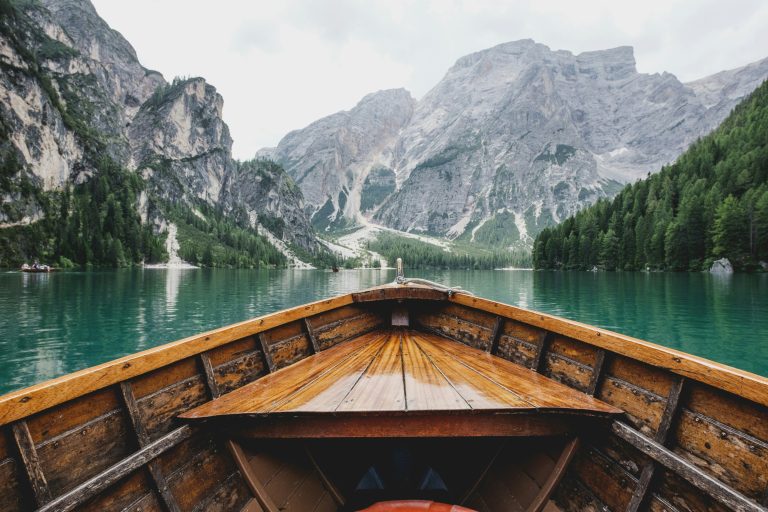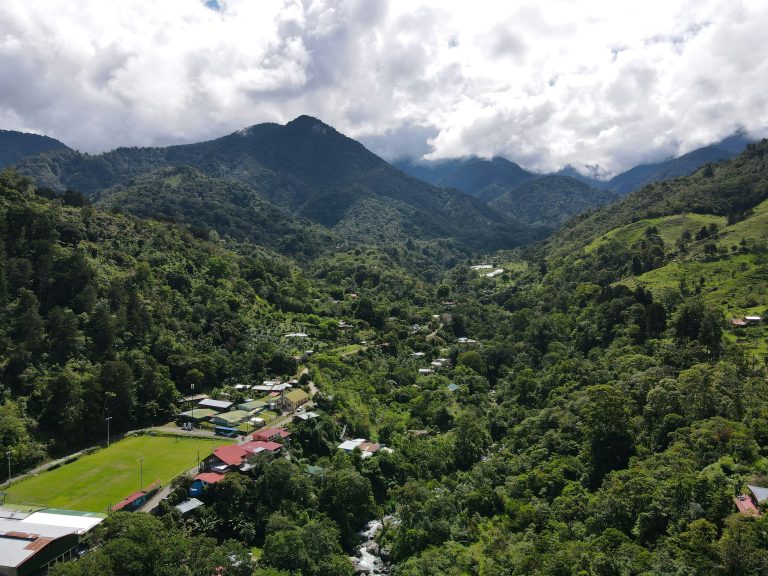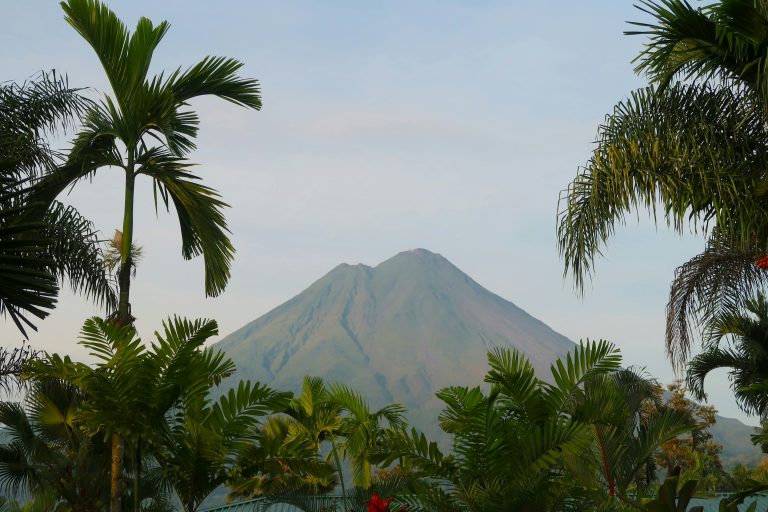Ireland School Trip: Following Dreams Along the Cliff Edge
by Catriona Spaven-Donn
As we round the rugged coastline of County Clare, the Atlantic whips the rocky shore and I point across the grey horizon, clouds hanging low over its distant line. I turn to the boys: "wave to home, guys! The next stop over the ocean is Canada!"
It's not hard to believe that the next land mass is rural Newfoundland, 3000 kilometres away, as we catch our first glimpse of the Cliffs of Moher and the tremendous crashing waves rolling in from the ocean. Doolin is a wild, windy place, and does feel rather like the end of the Earth.
At dinner that night, in the one-hundred-and-eighty-seven-year-old Gus O'Connor's pub, the teachers reminisce about their school trip to Iceland a couple of years ago. There, they stood on black sand beaches as North Atlantic waves etched into the young rock, causing stacks and cliff caves. We comment that the lush rolling fields and wild coastline of Ireland's West Coast feel much like Iceland, and as we gaze across the exposed limestone, we are lost in the aeons of geological time. As the visitors centre website states, "the Cliffs of Moher have majestically faced the Atlantic for over 350 million years and their beauty is incomparable – it is Ireland's most visited tourist attraction and when you visit you will understand why."
Gus O'Connor's, famous across the country for its nightly shows of traditional fiddle and accordion music, is warm and welcoming with large portions of freshly caught Atlantic salmon, seafood chowder, and beef and Guinness stew. Everyone is soon rosy-cheeked and sleepy; it was an early start that morning in Dublin and a full day traversing the country by train and walking the winding streets of Galway, before enjoying a sport and cultural exchange at a local high school. In the small community of Gort, County Galway, Irish students taught their Canadian counterparts the national sport; hurling. The travel, new sights, urban exploration, athletic afternoon, bumpy bus ride, and hearty meal, are all making their mark and back in our modern, spacious hotel, the boys head to bed. They know that tomorrow is a big day.

That night, the rain whips against the windows and the frames rattle in the wind. I worry that the weather might force us to change plans the next day, but fall asleep hoping that the morning will bring with it calm and maybe, just maybe, some sunshine – the boys and the teachers have been looking forward to the next day's activity as the highlight of the trip.
Grateful for the slightly later start in the morning, we all gather in the dining room and order chocolate chip pancakes, eggs Benedict or a full Irish breakfast (complete with black pudding, which only some are brave enough to try). Fuelled for the day ahead, we set out along the one road through Doolin and meet Pat outside O'Connor's pub. The clouds pass quickly overhead and the rain comes and goes, but it's lighter than yesterday and spirits are high.
As we head up the road from the village, Pat points out his land, which has been in his family for five generations. When he is not leading visitors along the Doolin Cliffs of Moher Walk, he is out in the fields with his livestock, farming. At various points, he stops and tells us about the history of the area, and, as the path narrows and the cliffs loom up ahead, about safety as well. In his lilting West Coast accent, he tells us about the volunteer life guards and life saving missions in the rough seas here. The teachers and I exchange nervous glances and the most boisterous boy in the group is sent up front to walk beside Pat, who takes him under his wing.

"You can just imagine, can't ye, that this was just the best playground for a boy to ramble about in when he was your age?!" he sweeps his hand over the hummocky fields and steep slopes that fall away from the path on the right hand side, waves meeting the land with a forceful crash.
We imagine Pat as a young boy, his father and grandfather farming the fields while he climbed down the cliffs and swam in sheltered pools, befriending sea birds. He tells us more than once that his dream was always to develop a path along the cliffs right from Doolin up to the highest point of the Cliffs of Moher. In 2006, he started negotiating access with the thirty-nine farmers whose land the path crosses, finally creating an 8 kilometre track that is mostly removed from the crowds of tourists who come in bus loads to the visitor centre, but miss the stretch of coastline that we have pretty much to ourselves that morning. Later that day, en route back to Dublin, our bus driver tells us that of the 1.5 million visitors who come to the Cliffs of Moher each year, less than 50,000 do the Doolin Cliff Walk, which is undoubtedly the full experience of this mystical coastline and a key part of the 2,500 kilometre Wild Atlantic Way.
The boys take photos along the way and we get group shots, the cliffs and the ocean making a jaw-dropping backdrop of natural beauty. They are muddy and wind-swept, but the exhilaration of the hike shows on their faces. We start ascending, and suddenly we are at an overhang of rock with a 214 metre (702 feet) cliff falling away underneath. Pat holds each boy by his shoulders as they peer cautiously over the edge. His grin shows that through them and their innate curiosity, he is remembering his own youthful sense of adventure that eventually spurred him to create this path and share the coastline he knows so well with visitors from all over the world.
After the boys have snapped the "Harry Potter cave" which has a Celtic folklore dating back much further than J.K Rowling's imagination, and we have joined the much more well-trodden path near the visitors' centre, we head down to an old-fashioned school bus that takes us back to Doolin. Before Pat gets off at Doonagore Farmhouse, he tells us, "I hope that doing the Doolin Cliffs of Moher Walk with me today has shown you that anything is possible if you follow your dreams. It was my dream to make this walk possible for all of you, who have come from far away, and now we're here doing it because I followed the dream I had when I was your age, and so can you. So, that's all I have to say, follow your dreams and anything is possible."

We look out at the tall grey blue waves and the spume carried over the green grass of the Emerald Isle, and I hope that these students will take Pat's message back with them across the ocean, and remember the Doolin Cliffs of Moher walk in years to come as a place of inspiration, adventure, exploration; a place where dreams come true.
See one of our Ireland trip offerings HERE








